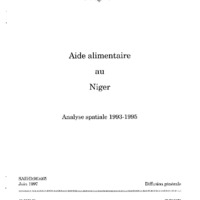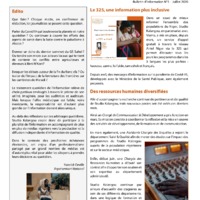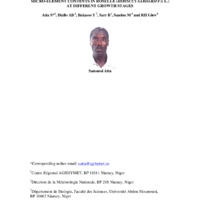Recherche
3 items
KALANGOU NEWS Bulletin d' information num. 5
Que faire ? Chaque matin, en conférence de rédaction, les journalistes se posent cette question. Parler du Covid19 qui bouleverse la planète et notre quotidien ? Ou continuer à couvrir les efforts des agents de santé dans la lutte contre le paludisme à Abalak ? Donner un écho du dernier sommet du G5 Sahel ? Ou tendre son micro aux acteurs locaux qui tentent de contenir les conflits entre agriculteurs et éleveurs à Birni N’Koni? Evoquer les débats autour de la fin du franc cfa ? Ou traiter de l’impact de la fermeture des frontières sur les cambistes de Maradi ? Le traitement quotidien de l’information relève de choix partiaux envisagés à travers le prisme de son utilité, imaginée, pour les auditrices et auditeurs. Mais lorsque l’offre médiatique est faible, voire inexistante, la responsabilité est d’autant plus grande car l’information devient alors unique. Au-delà des réflexions sur ces arbitrages quotidiens, Studio Kalangou essaie donc de participer à la pluralité de l’information en accompagnant de plus en plus de médias nigériens vers la production et la diffusion indépendante d’information de qualité. Dans le contexte des prochaines échéances électorales, cet enjeu d’un professionnalisme partagé par un grand nombre de médias est d’autant plus vital pour aider les citoyens à prendre leurs décisions au quotidien.
MICRO-ELEMENT CONTENTS IN ROSELLE (HIBISCUS SABDARIFFA L.) AT DIFFERENT GROWTH STAGES
In the western Sahel, leaves of Roselle (Hibiscus sabdariffa) have considerable economic importance because of their nutritional and medical uses. These plant organs are used to supplement nutrients provided by cereals such as millet and sorghum. However, there is a lack of information on the nutrient composition of these plant organs of Roselle at different growth stages. Therefore, the experiment was carried out under rainfall conditions during the 2006 rainy season (from July to September) at the experimental station of the Agrhymet Regional Centre in Niamey (Niger). The content of the micronutrients Fe, Mn, Cu and Zn in leaves of three ecotypes of Roselle (A3, A7 and A9) at three growth stages, vegetative (stage I), flowering (stage II), and mature (stage III) was determined. The experimental design was a randomized complete block with four replicates and one variable (ecotype). Results indicated that at stage I, ecotype A3 had higher Fe content in leaves. In addition, A3 had also the highest Zn content in leaves at stage I. For all three ecotypes, Fe and Zn content in the leaves decreased significantly (p<0.05) from stage I to stage II, then remained constant until stage III. For Fe, the decrease between stage I and II was 37& for A3 and 50&, respectively for A7 and A9. The corresponding decrease of Zn content was 30& for A7 and 50&, respectively, for A3 and A9. The Mn content in the leaves of Roselle was similar for the three ecotypes at stage I, thereafter increased continuously during plant growth. From stage I to II, the increase was about 90&, 70& and 50&, respectively for A9, A7 and A3. From stage II to III, the increase in Mn content in the leaves was significantly (p<0.05) higher for A3 and A7, respectively 180& and 80&. At stages I and II, the highest Cu content was recorded for A3 and the lowest one for A7. During the whole cycle of plant growth, the Cu content in the leaves was relatively constant for A9. In contrast, Cu content in the leaves decreased for the remaining ecotypes. Therefore the vegetative stage corresponding to 25 days after sowing is the recommended optimal harvest time of Roselle to maximise on the nutrients.


